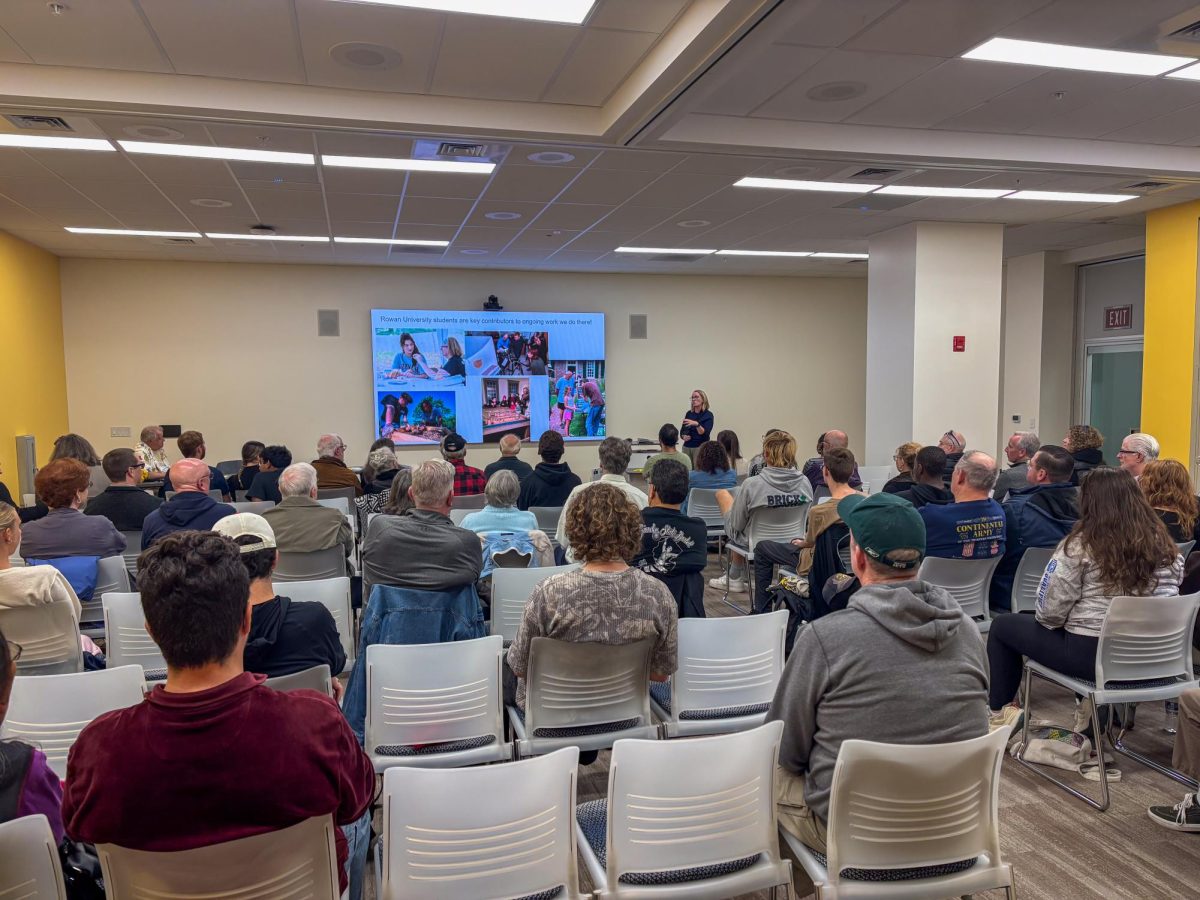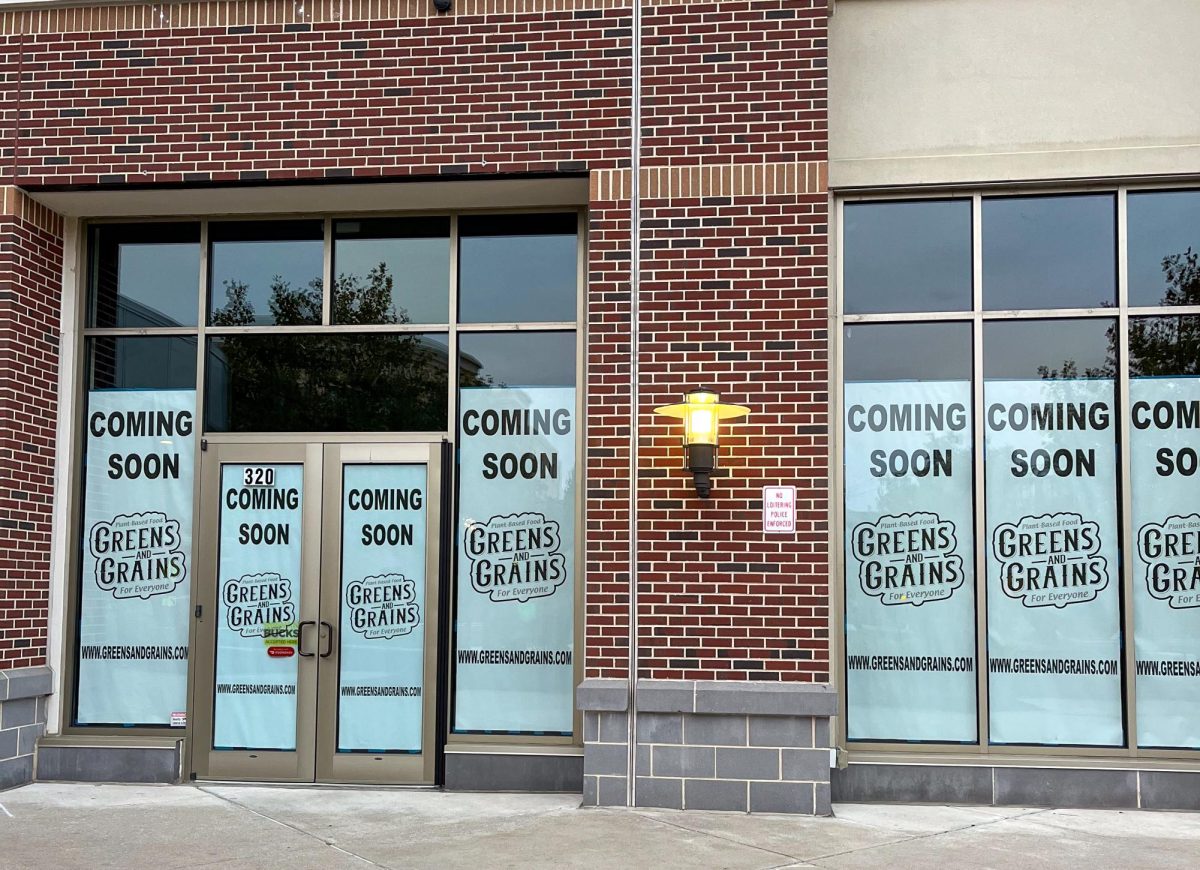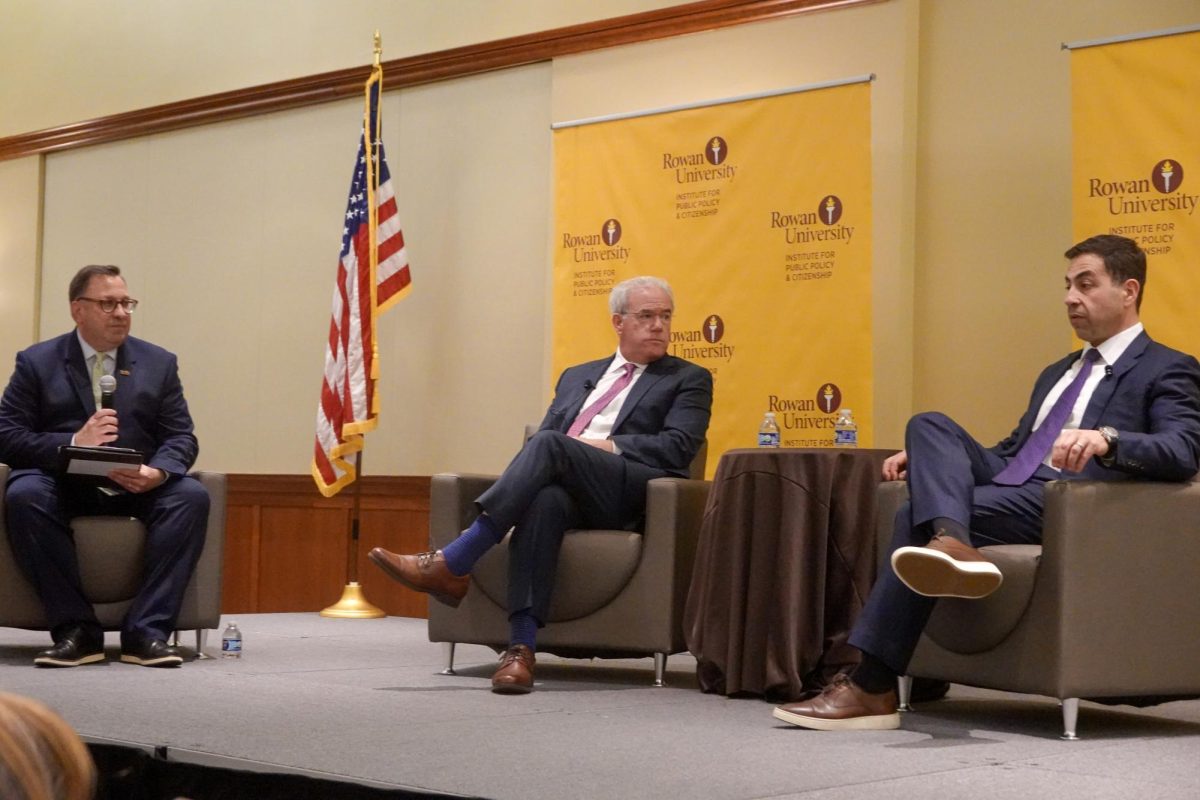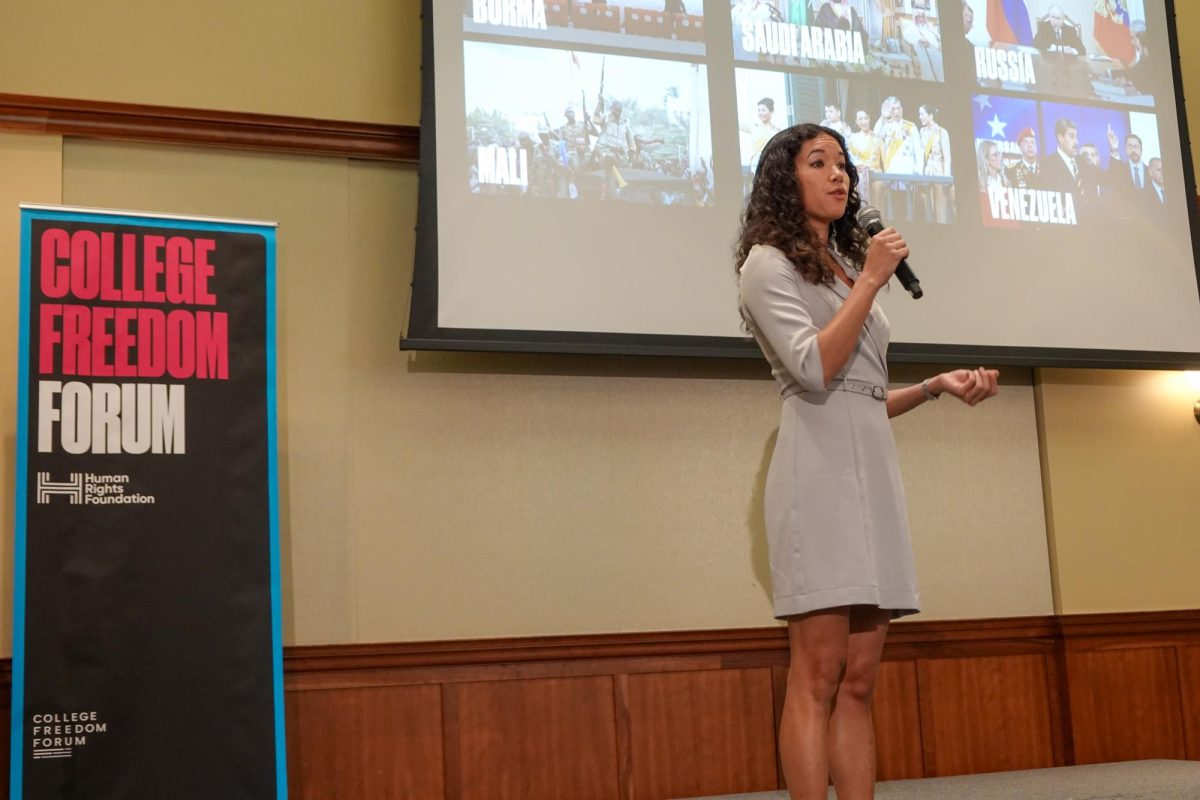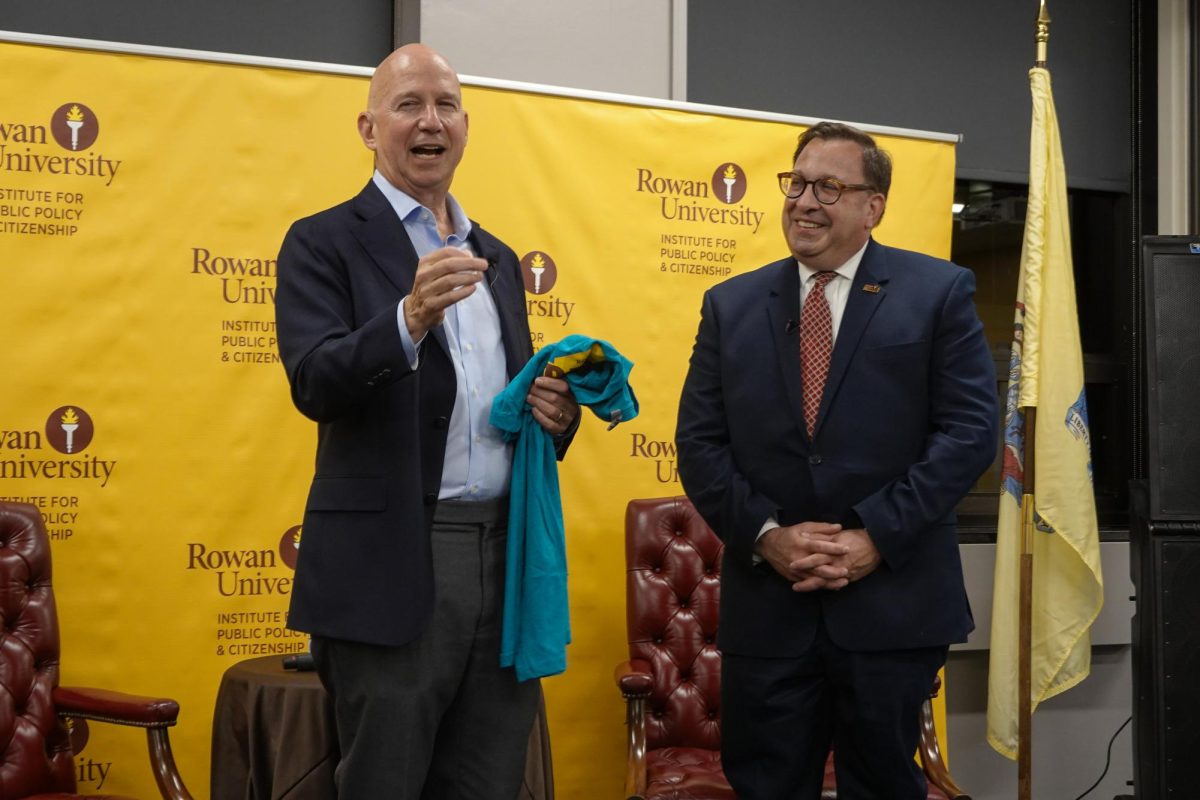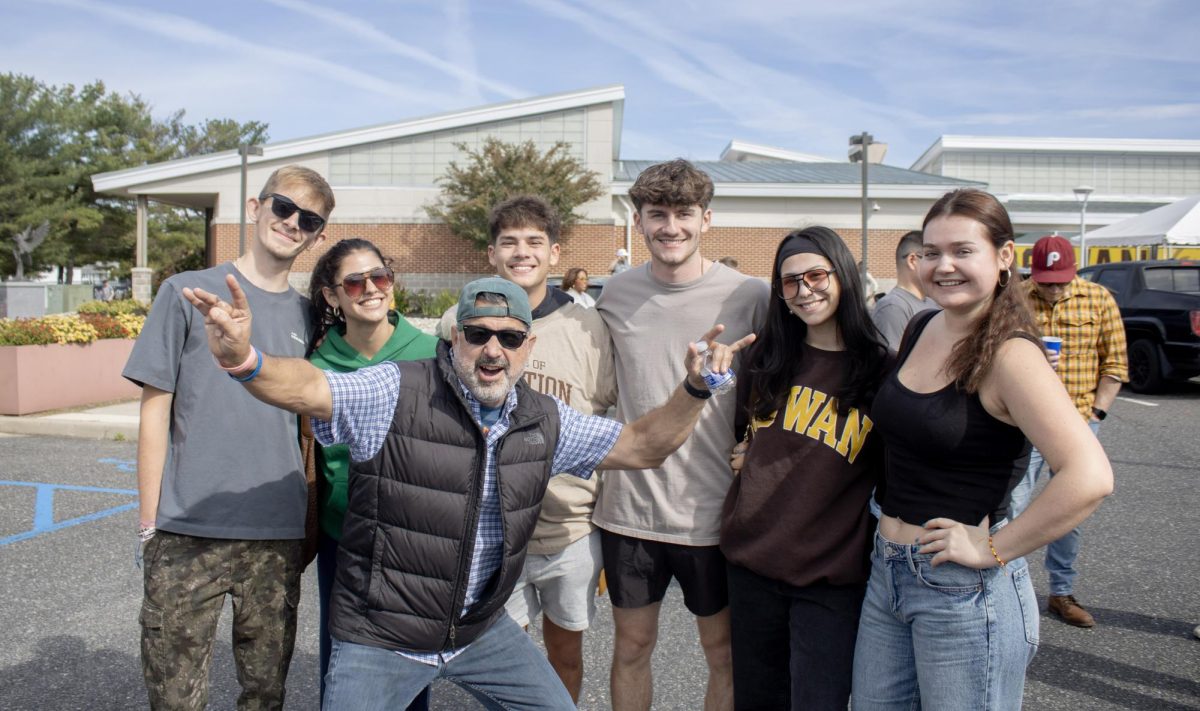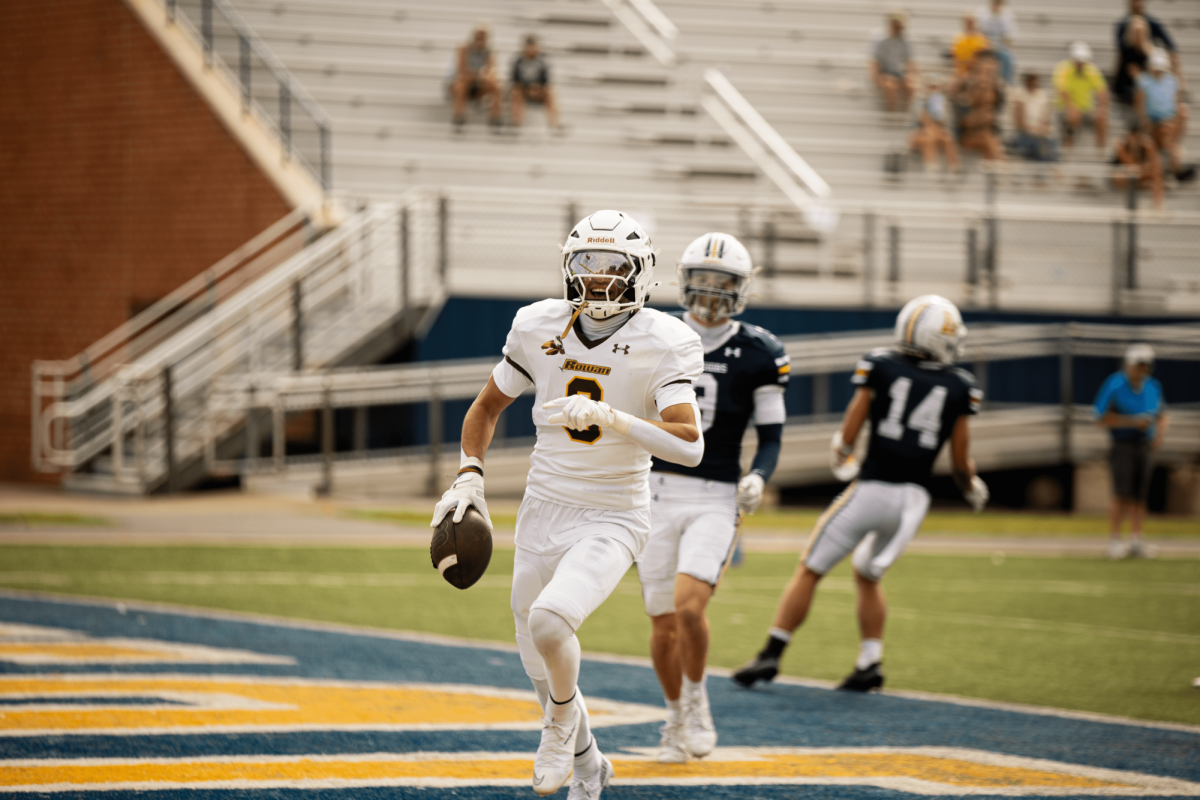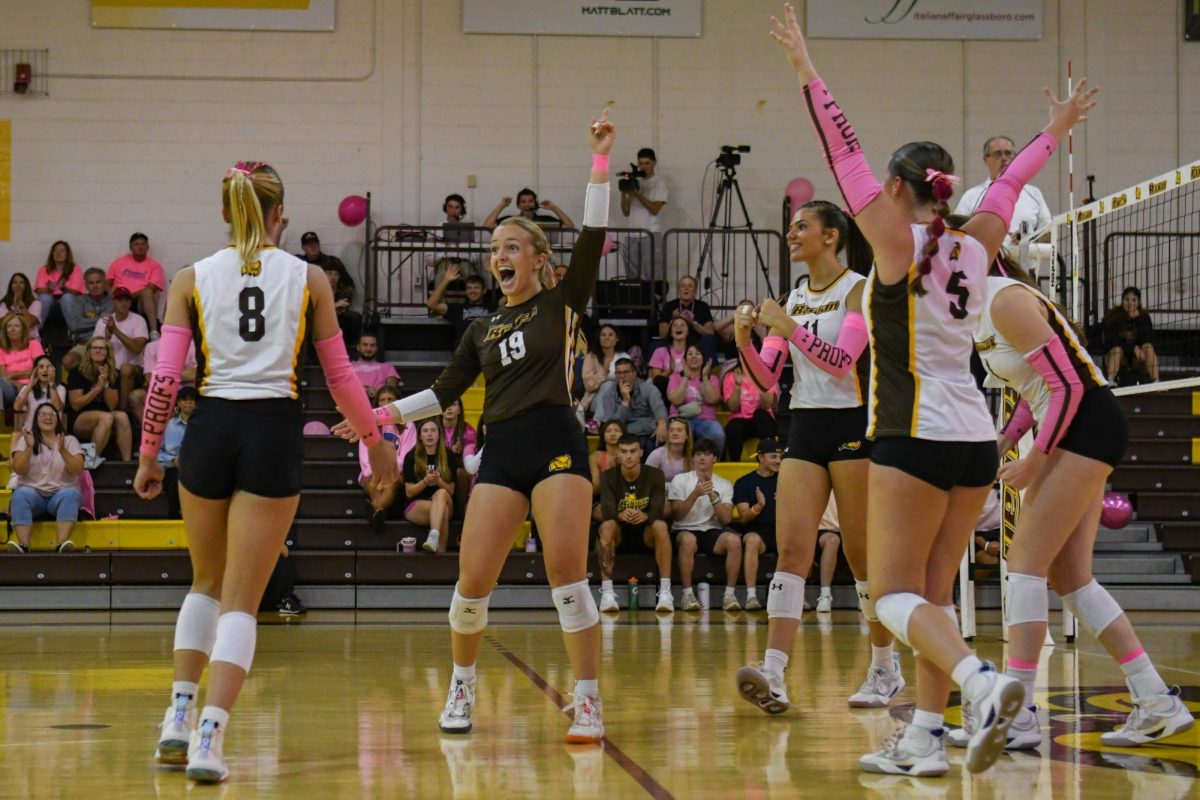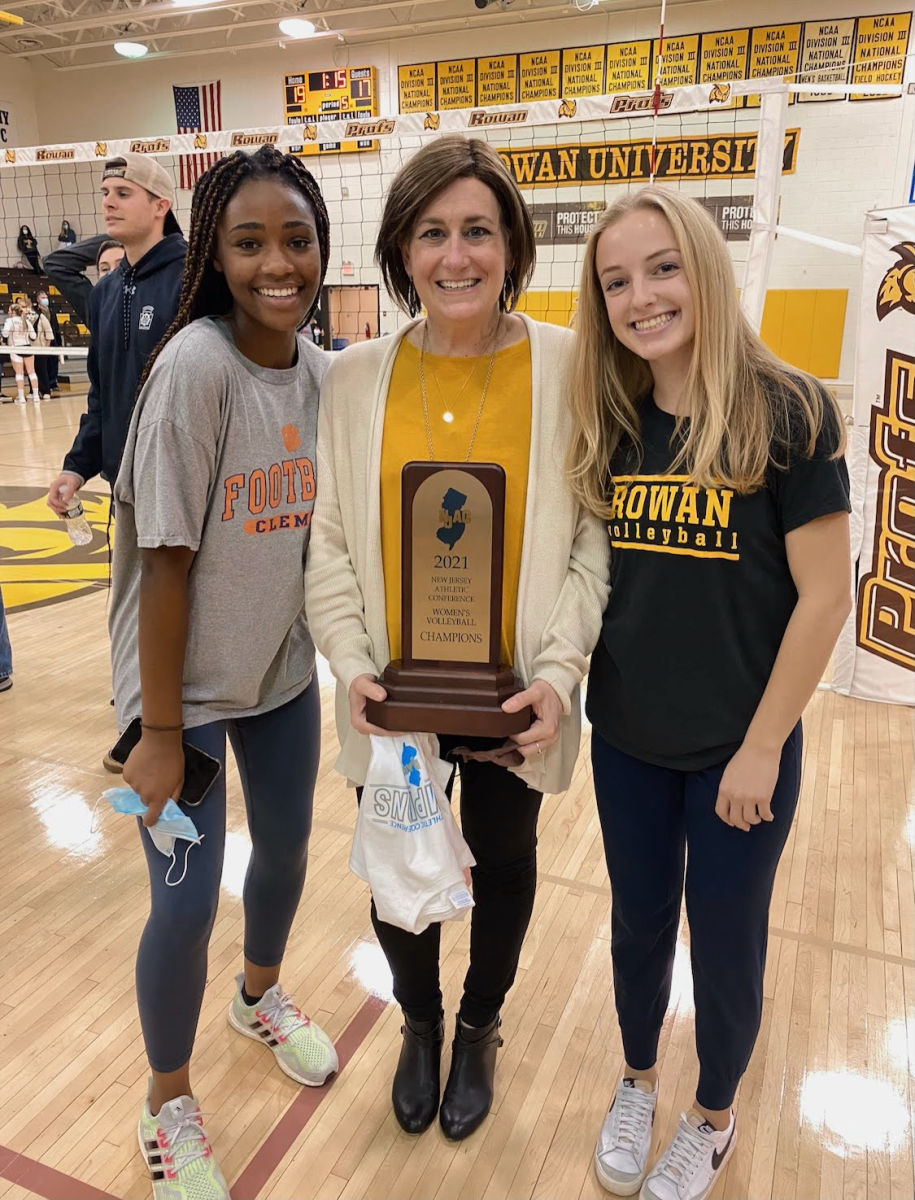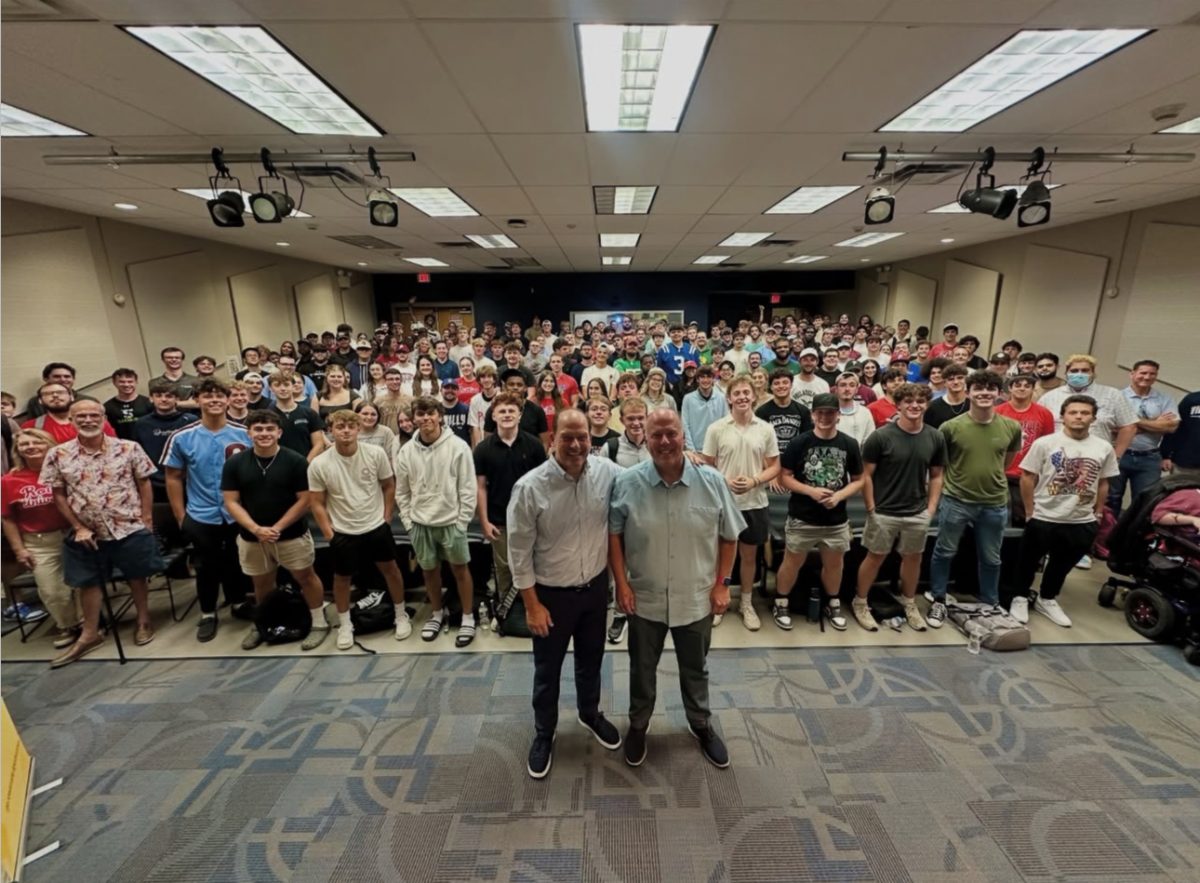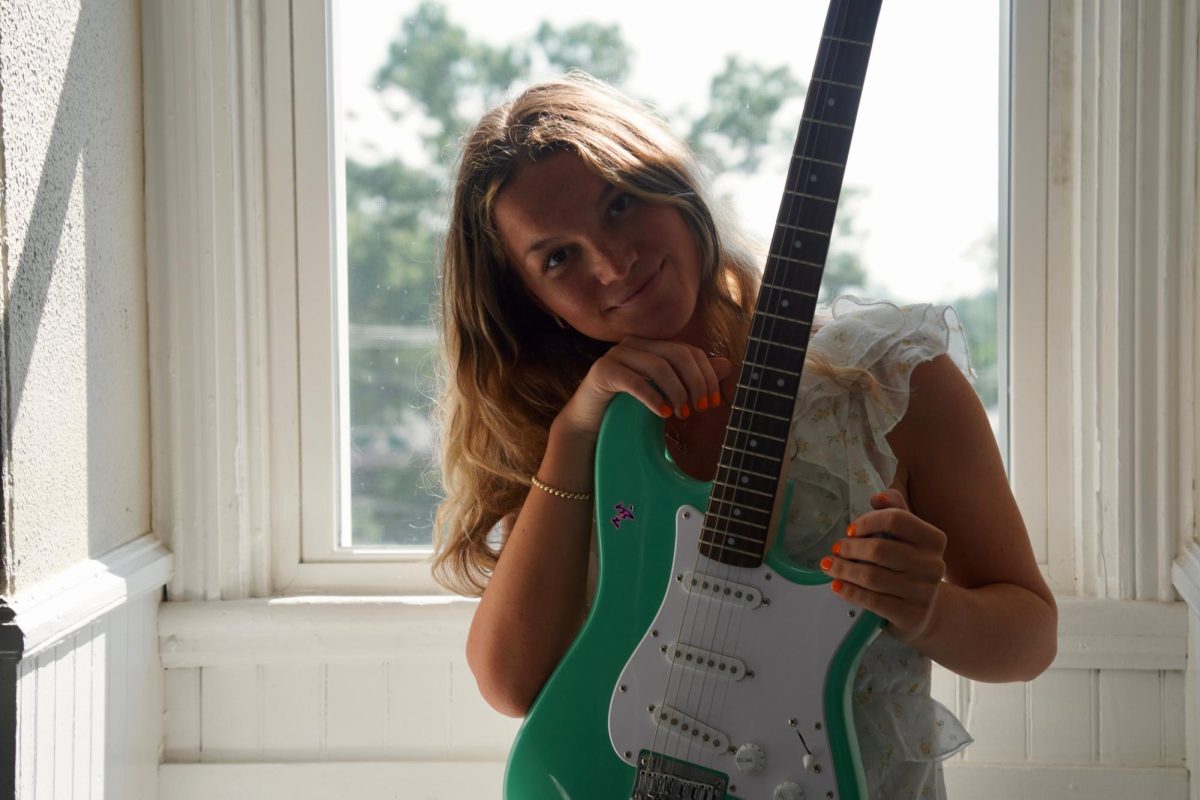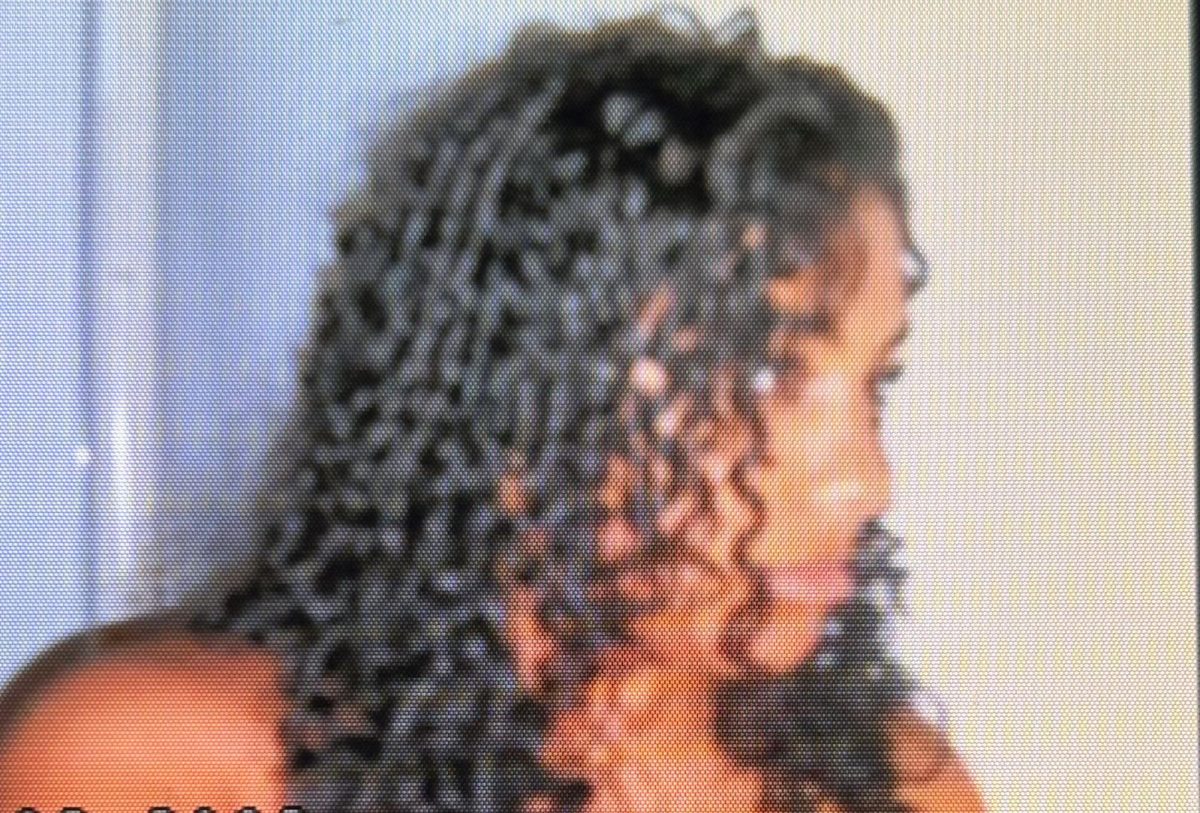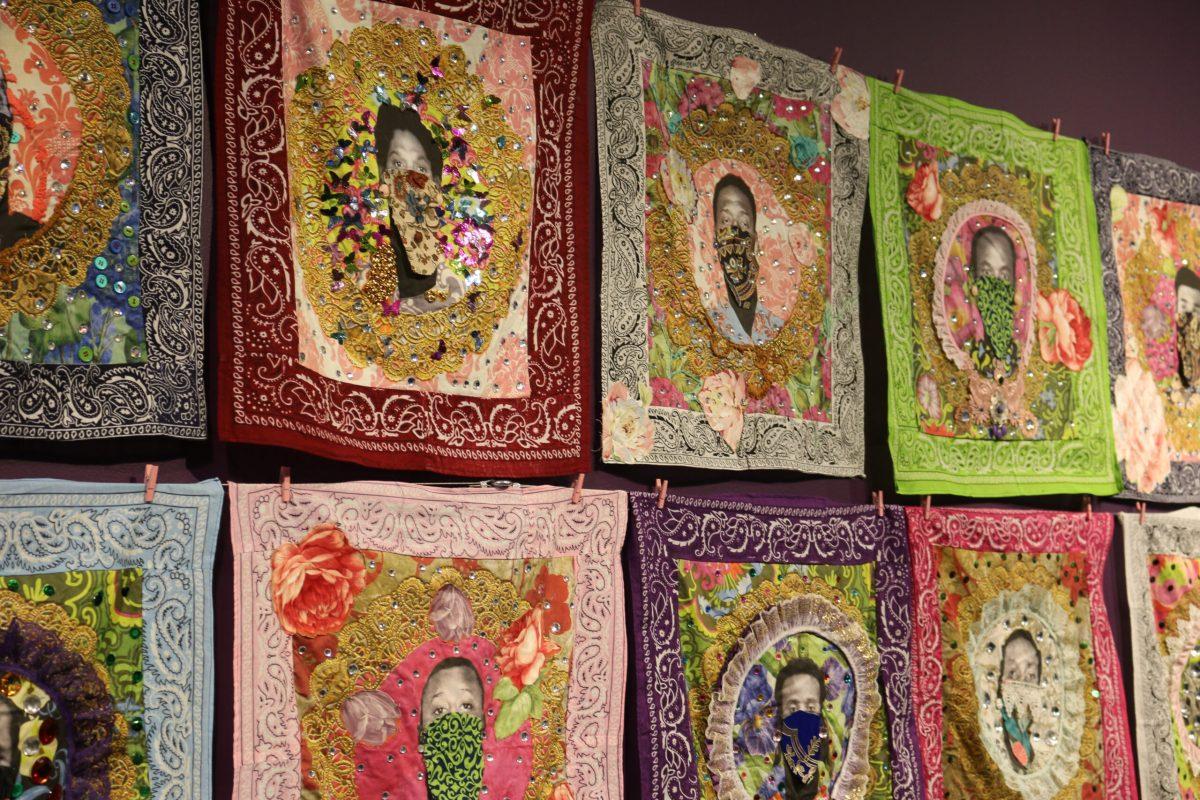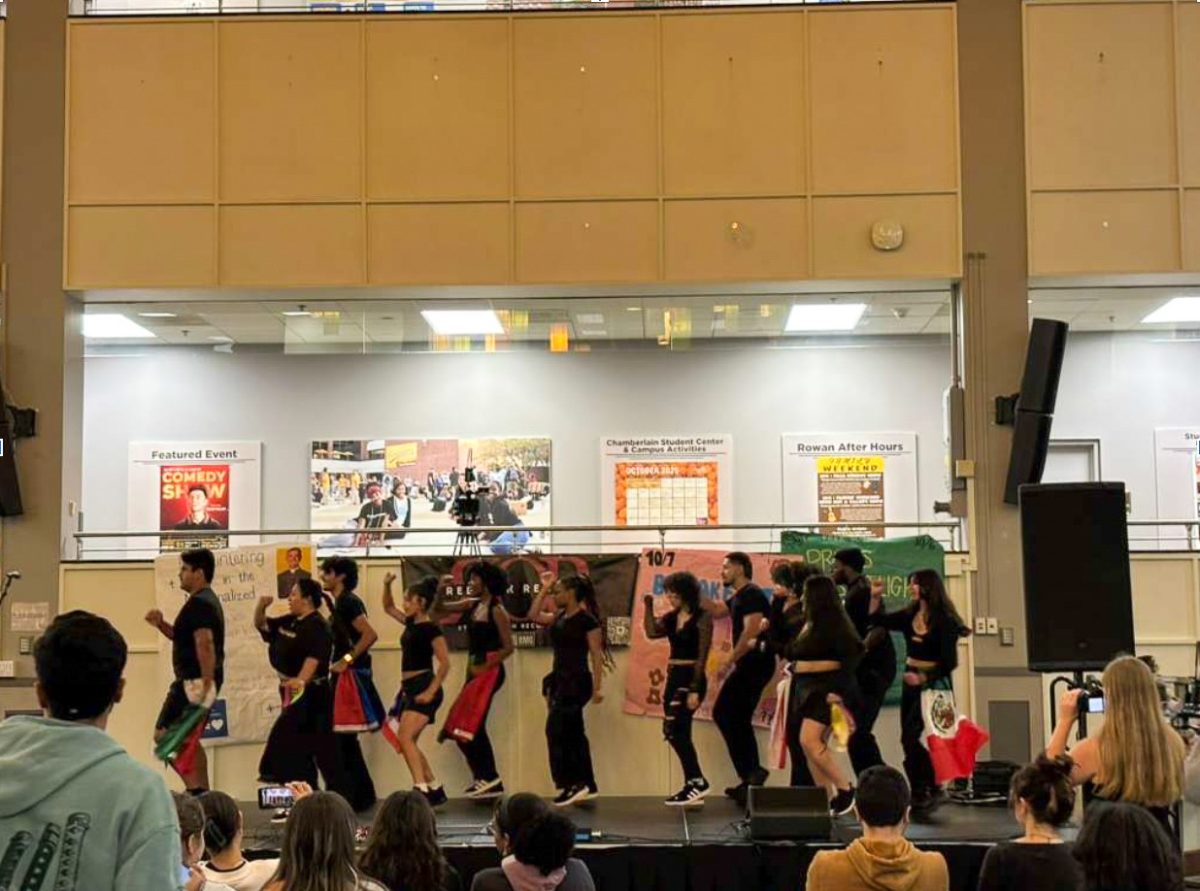Ebony G. Patterson walked into the Rowan University Art Gallery in bright red knee high boots, with blue hair and and big multi-colored glasses. She was hard to miss, like most of the artwork she creates, by appearance alone.
In the Art Gallery exhibition “If We Must Die…,” the faces of 72 men with bandanas covering their nose and mouth in fabric squares take up one wall of the gallery. Their eyes are fixed across the room at large poles holding up coffins. The squares and coffins are made of brightly colored fabric, each layered with either flowers, glitter, lace, beads or all four.
Patterson is an artist from Jamaica whose work focuses on social injustices toward disenfranchised communities, people who are invisible or voiceless, specifically the working class and black communities. Her work has appeared internationally, in places such as Brazil and the Cayman Islands, and throughout the U.S. in Miami, New York, Boston, Seattle and Chicago.
Professor and artist Colette Gaiter introduced Paterson’s art.
“[Patterson] uses what she calls ‘bling’: inexpensive faux jewels, pearls, fabric details and other artifacts in her elaborate tapestries,” Gaiter said. “The colorful textured surfaces force viewers to confront our fascination with shiny objects, even though we know they’re there to seduce us.”
As Gaiter points out, one of Patterson’s goals is for the viewer to see past the “bling” and acknowledge the person underneath.
Gaiter is a professor in the department of art and design and Africana studies at the University of Delaware in Newark, as well as a writer and international artist. She has engaged with Patterson’s work previously and for this event sat down with Patterson on a small stage in front of about 30 people for their discussion, titled “Not distracted by shiny objects.”
The 72 faces on the wall represent the 72 men and one woman who died during the Tivoli Incursion in a neighborhood called Tivoli Gardens in Kingston, Jamaica due to military violence. Their names were never released. Patterson made “the of 72 project” around 2010, soon after the event.
“I made the work because I felt like it was important to mark the moment,” Patterson said during her conversation with Gaiter. “The people who passed were victims, but so were [the people who still live there]. They also have another kind of trauma.”
A critical part of the work comes from the idea of people who are visible and invisible, and what makes the latter become visible.
“I want you to see people. I want you to think and see the environments those bodies come from,” Patterson said. “I think it’s also important for us to think about ourselves in relation to those people and to consider why it’s important to acknowledge people, why it’s important to make space or to create space for others.”
Patterson’s vibrant coffins are a project called “Invisible Presence: Bling Memories,” which she displayed during Jamaica’s Carnival in 2016. They represent Jamaican dancehall funerals; dancehall is Jamaican popular culture. The coffins came a while after “the of 72 project.”
Gaiter explained in her introduction of Patterson that African funeral traditions are much different than those in Western culture. Instead of a being a “solemn event,” the funerals “contain elements of celebration and lightness.” While Patterson was making the coffins, she was aware of the growing practice of “bling funerals” in working-class communities. In Jamaica, people attending dress as if they’re going to a party. She describes how both ordinary people and dons, informal political figures at the top of the social hierarchy in Jamaica, have the same kind of lavish funerals.
“She [the ordinary person] recognizes her own value and the value is performed on her behalf by her loved ones, by the members of the community, so much so that it looks like a funeral that may have happened for somebody that was the prime minister,” Patterson said.
People in the working class being seen or noticed by others for having material items is something Patterson touches on heavily.
“We live in a society that attributes importance to materials so you have these things, that must mean that you have value,” she said.
She thinks nothing will change until individuals ask questions about social structures, saying that “it’s not enough to just show up and scream, it’s also what we are doing in our day to day.” She feels that it has to happen on an individual level before it can happen on a communal level.
She does not consider herself an activist or an artivist.
“I consider myself a person who is in many ways almost like a history painter…how could I not make something? It would have been so easy not to,” she said.
Patterson thinks of her art in relation to painting. She keeps in mind color, contrast and texture while creating her work.
“I’m enjoying the possibilities of discoveries in the studio, and all of the new things that I continue to learn from the same materials that I keep,” she said.
Gaiter then asked her about the evolution of her work.
“For me, it’s never done,” Patterson said. “I’ve never finished a series of work. I always see it as a place that I can go back to because I’m still unpacking that language. I’m still finding ways to turn those problems on its head.”
Mary Salvante, director of the Rowan Art Gallery, is the reason Patterson’s artwork is displayed on campus. She first saw Patterson’s art at the Studio Museum in Harlem, New York.
“I felt that she had a unique perspective about the ideas she was putting forward in her work, that she would be an artist that would be important to bring to Rowan,” Salvante said.
For those who would like to see the gallery in person, Patterson’s art will be up until April 20 in 301 W. High St.
For questions/comments about this story, email [email protected] or tweet @TheWhitOnline.



